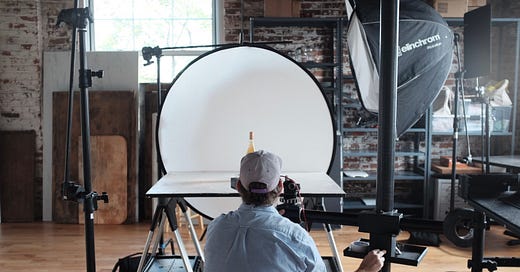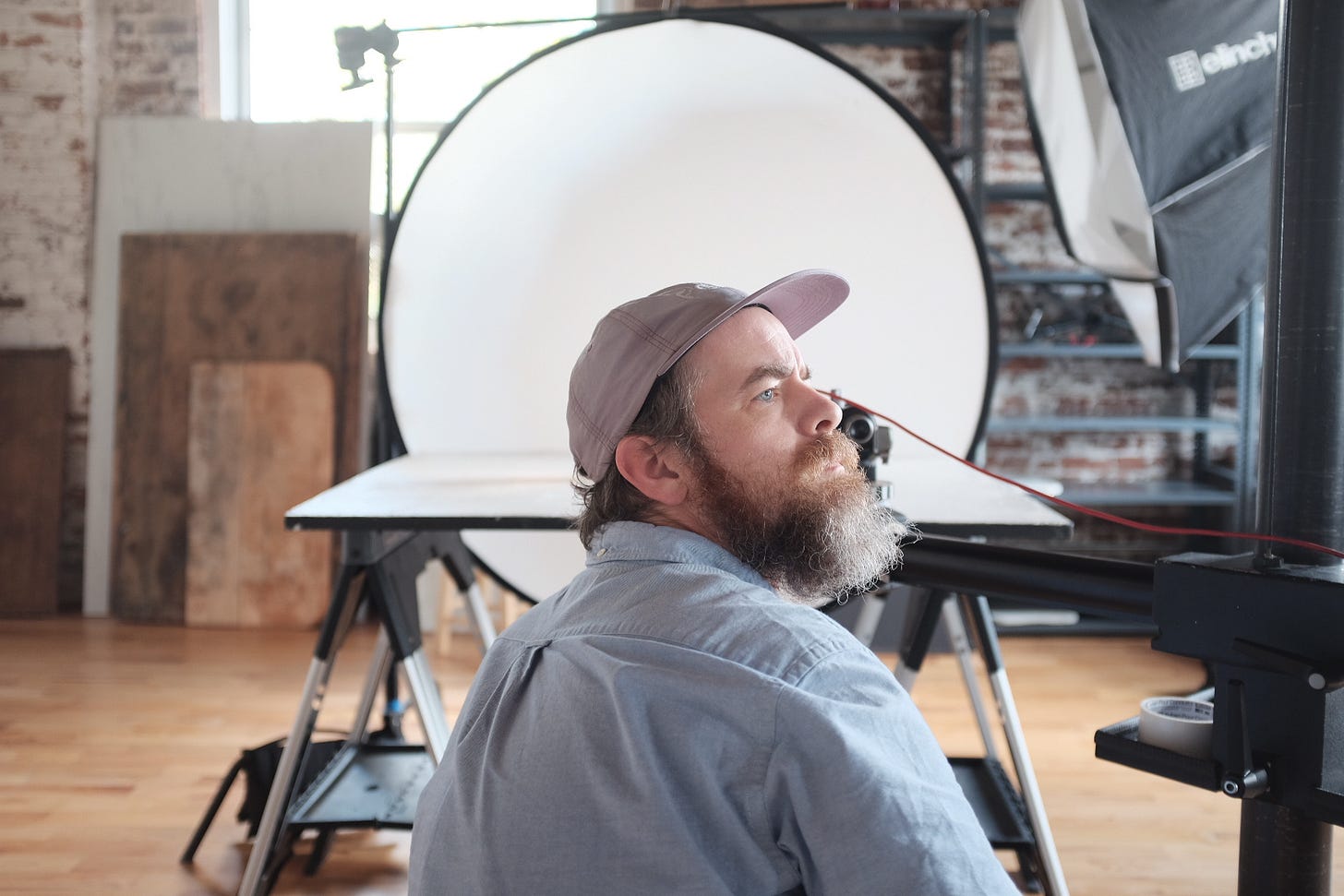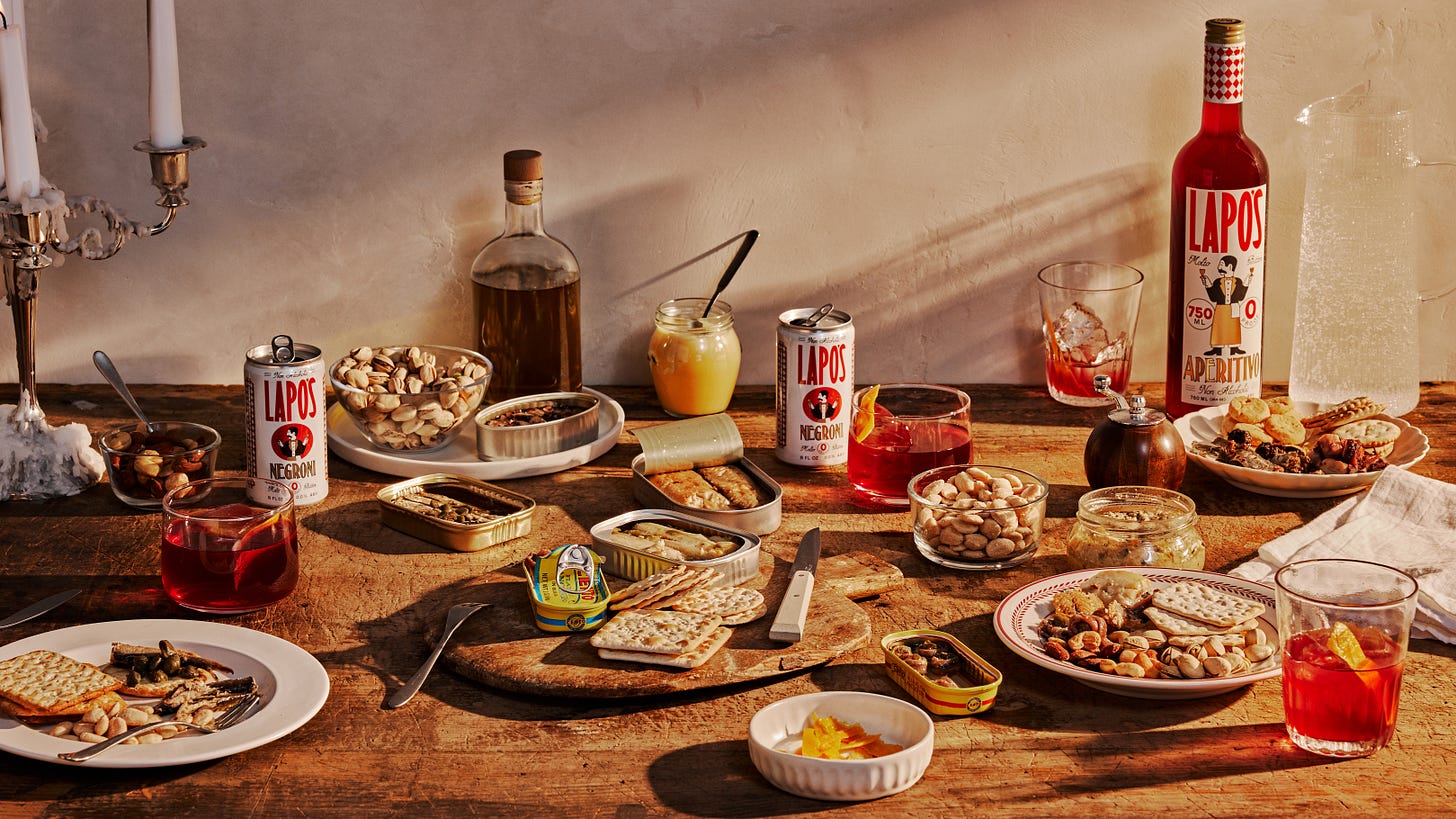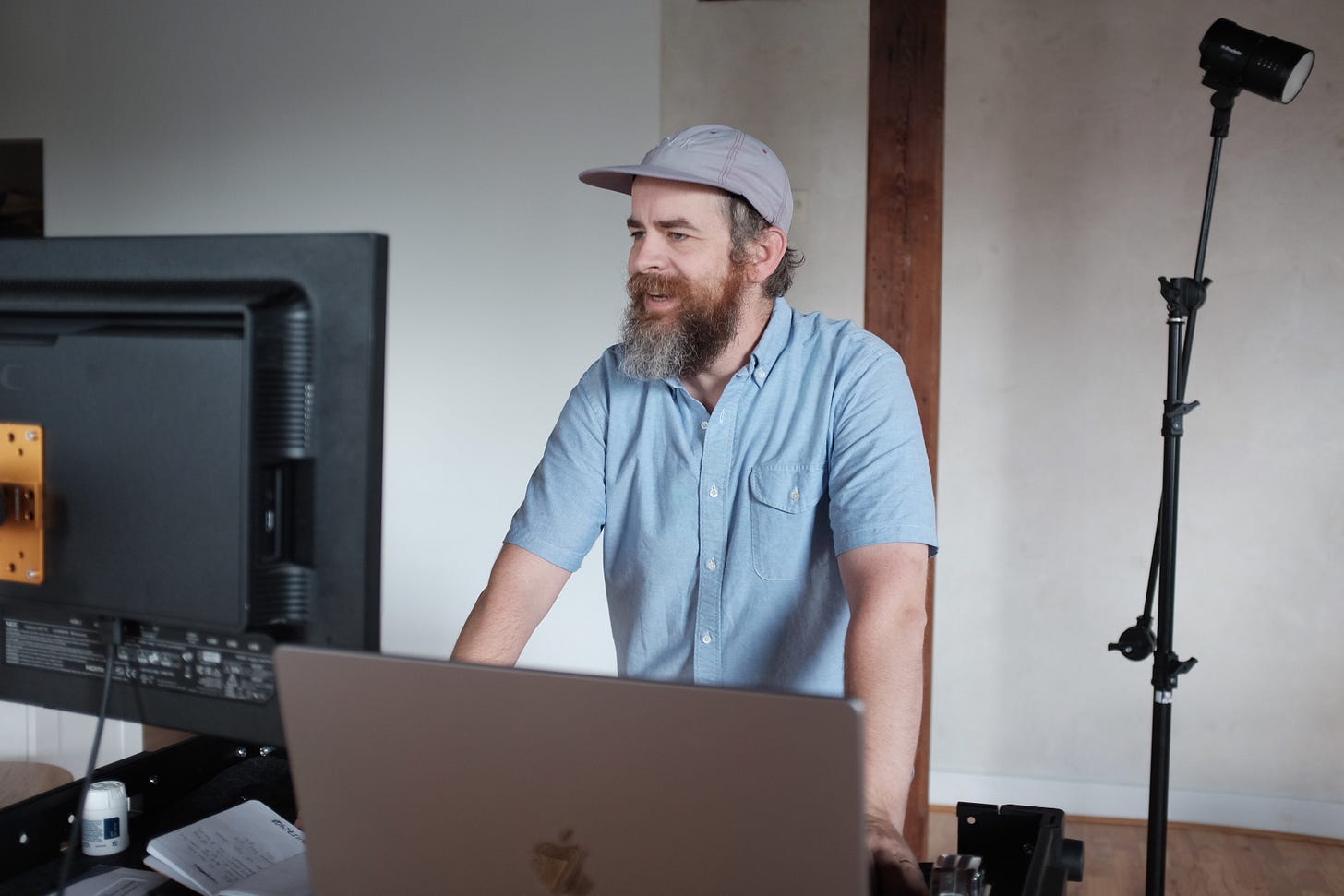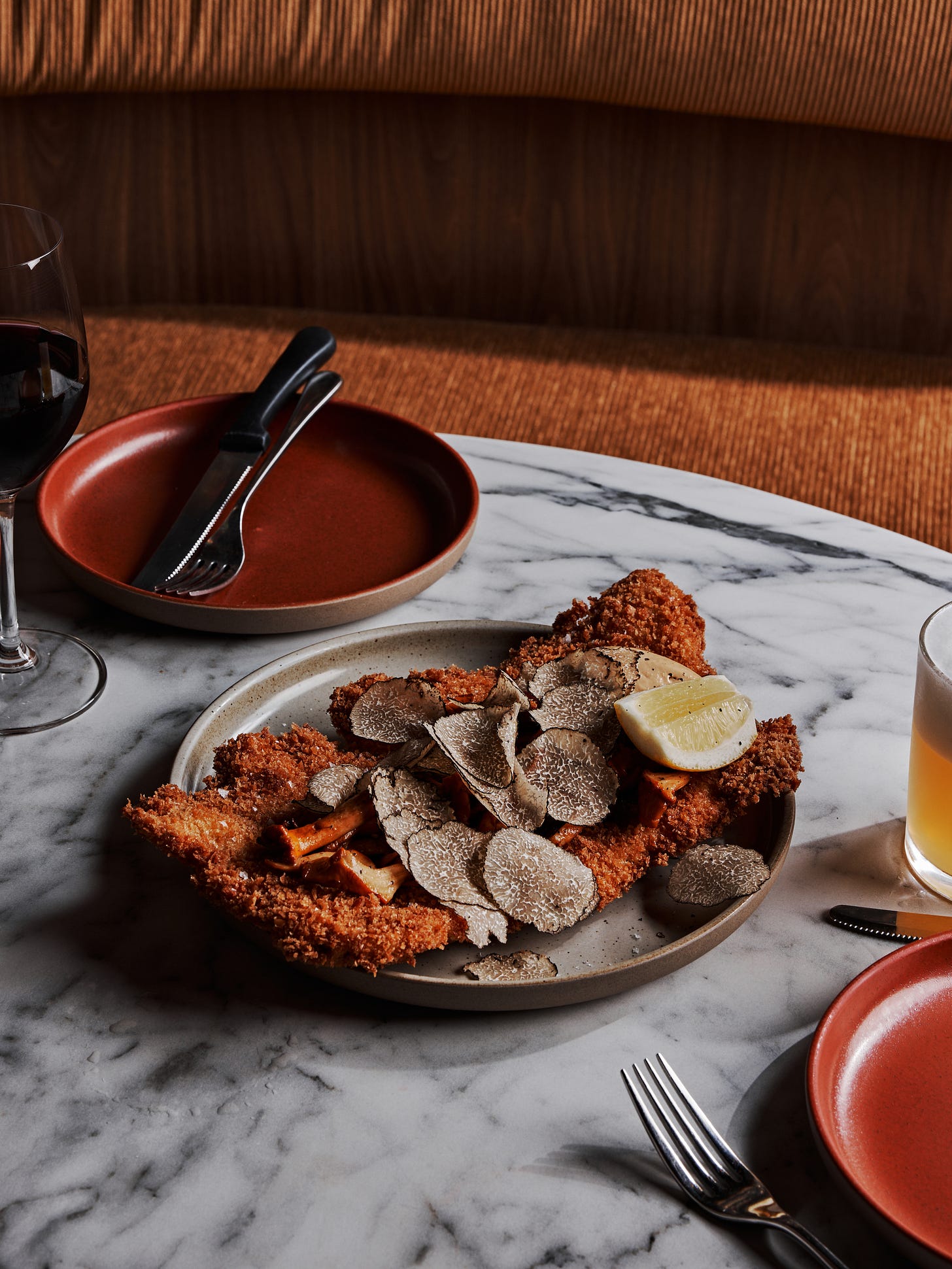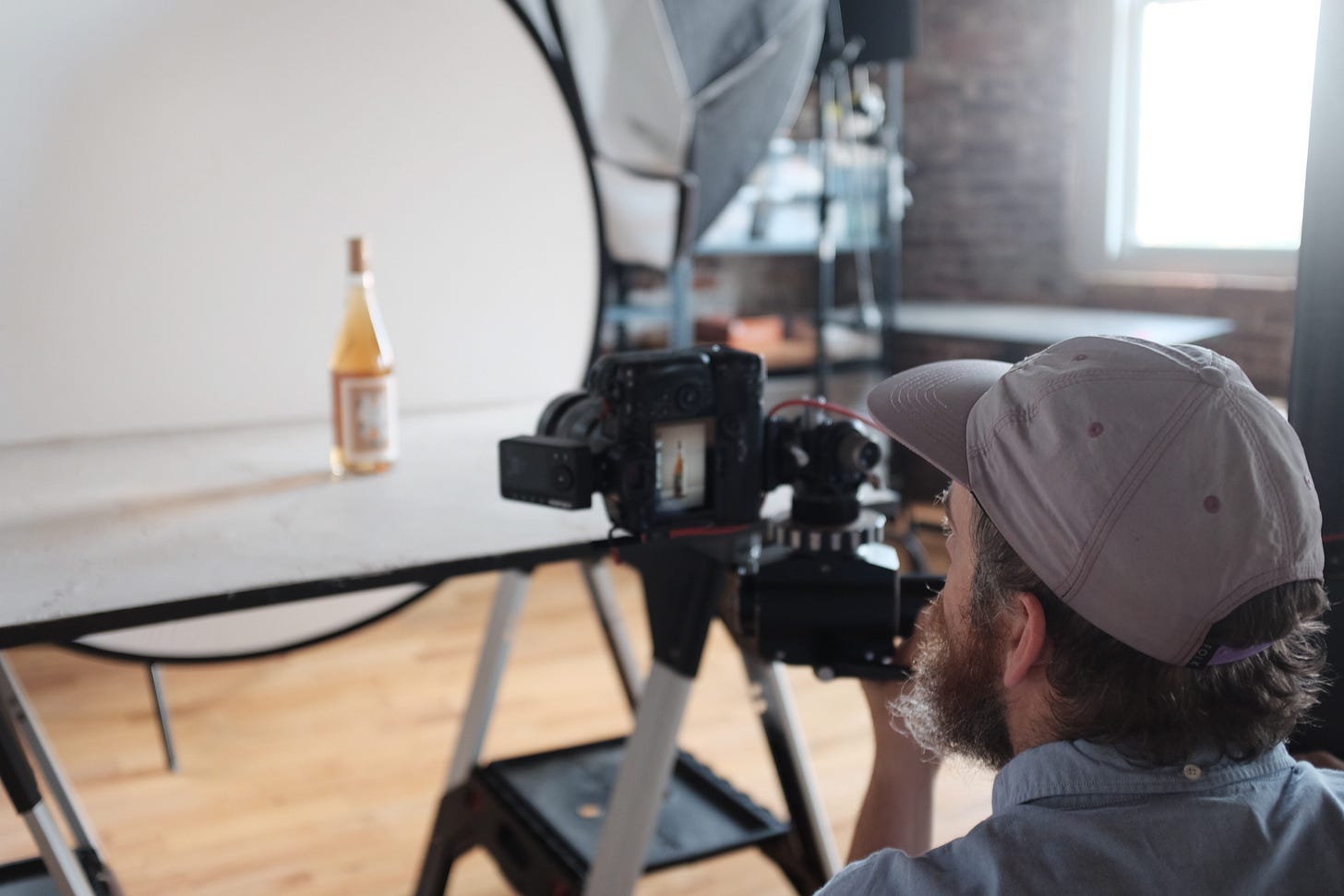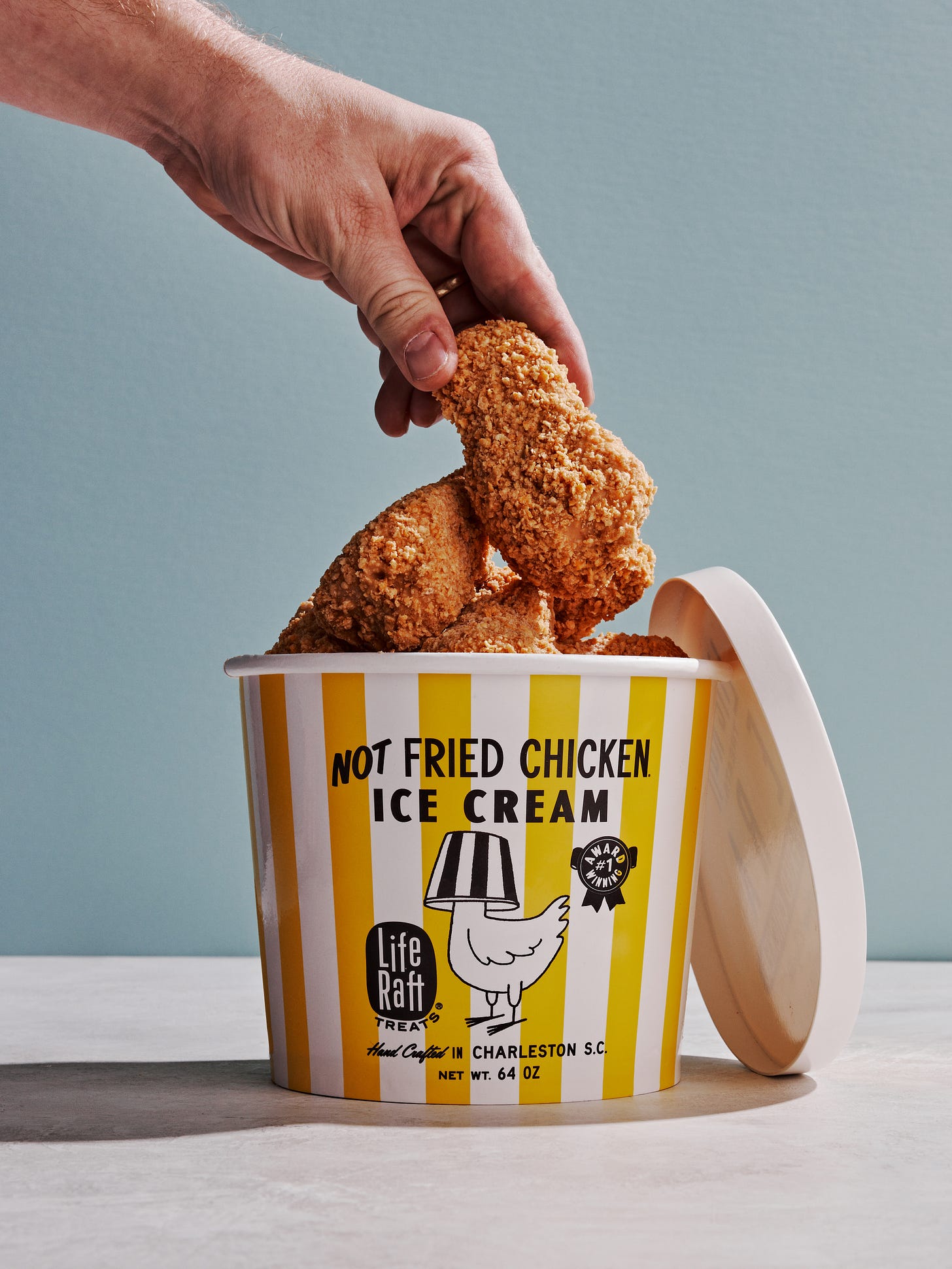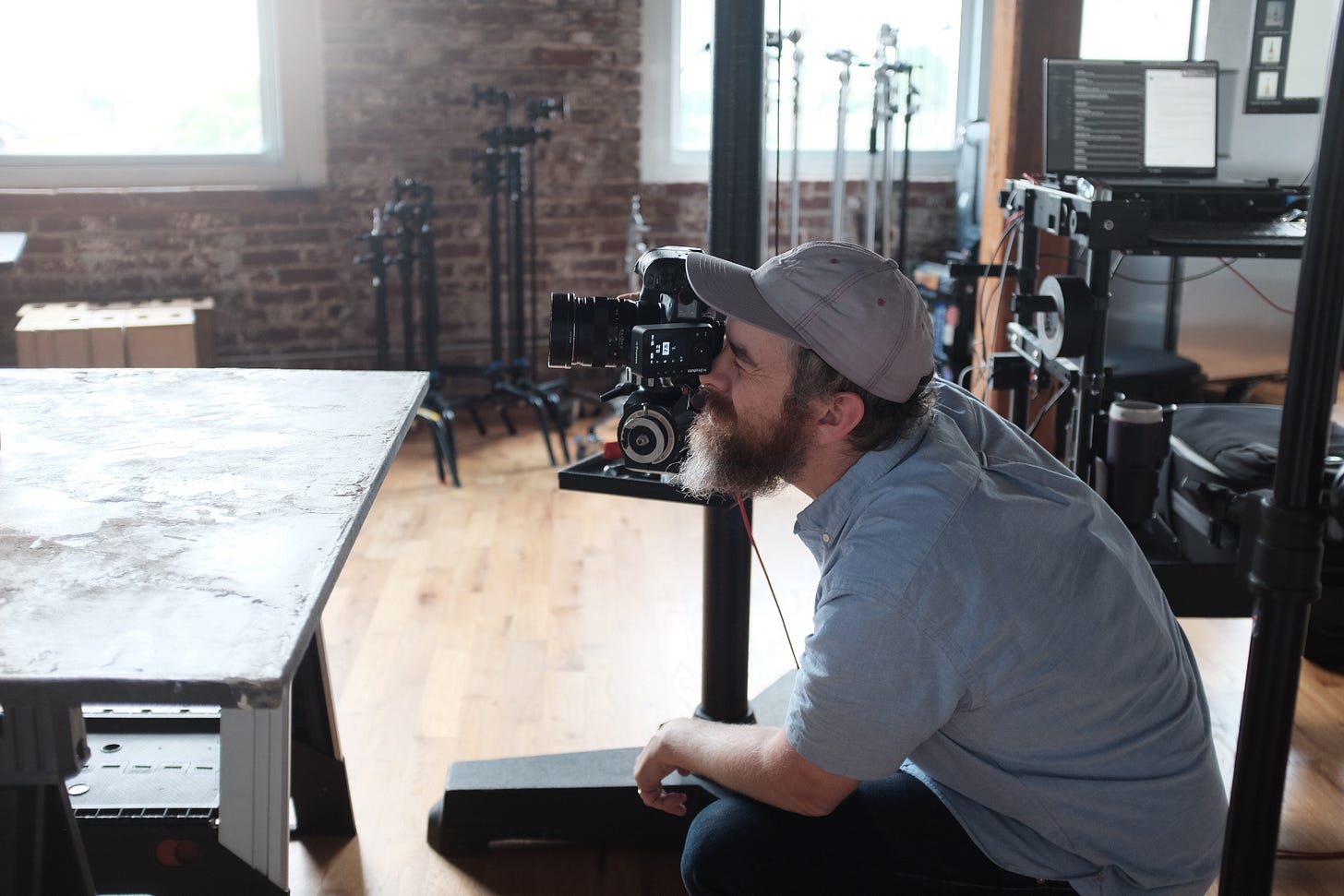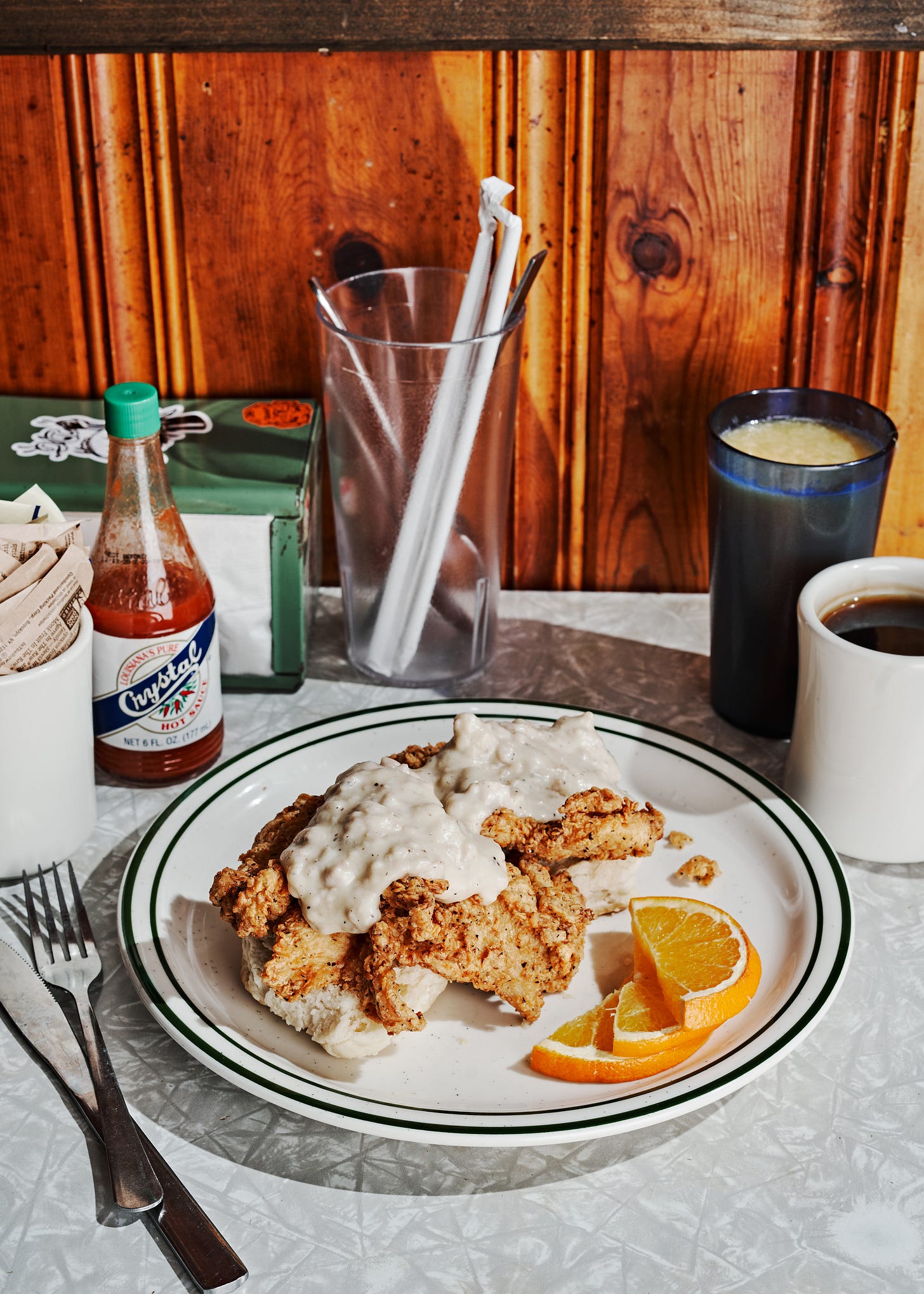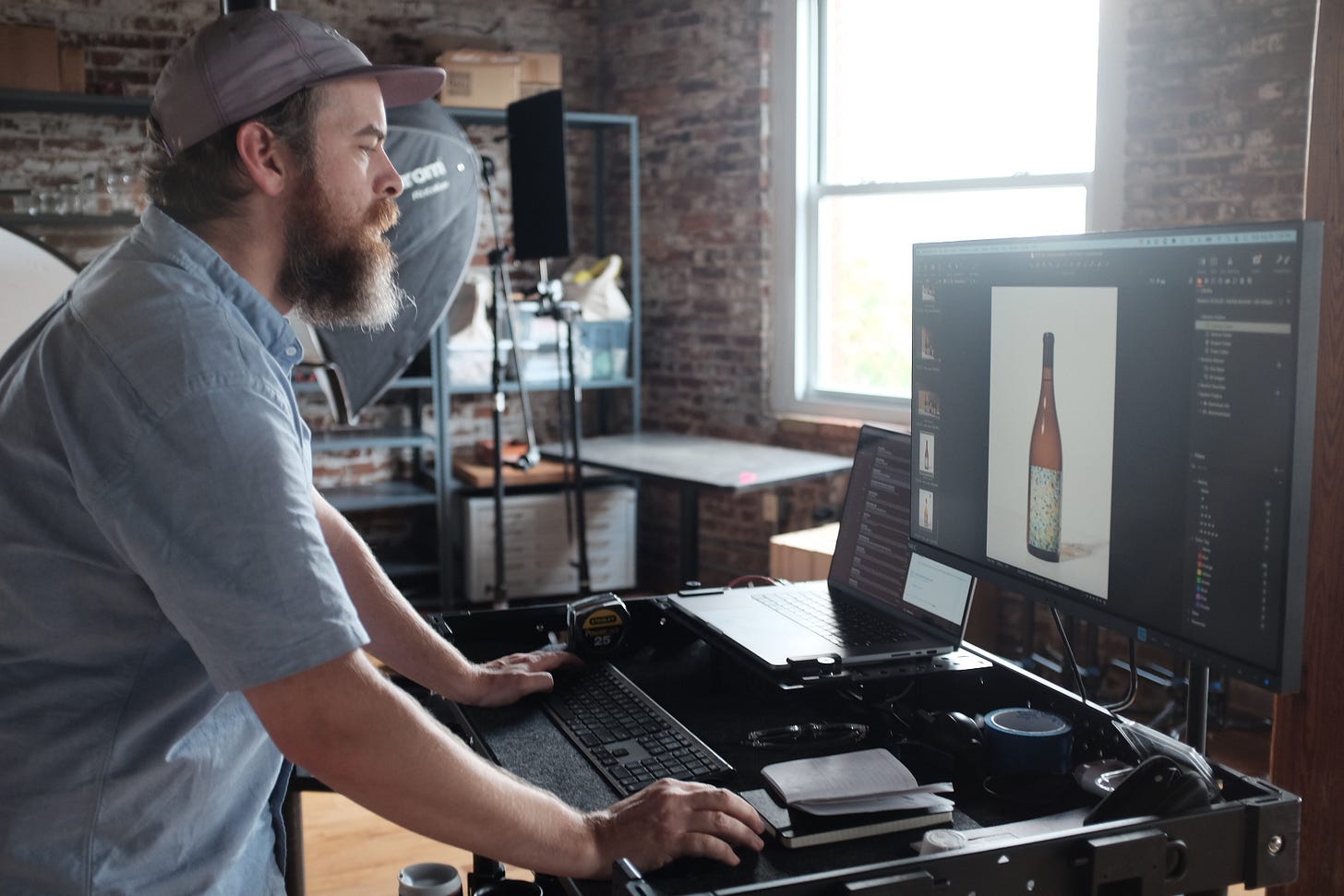Before instagram was for influencers, giveaways, and highlight reels, it was a place for folks to share the wonderful mediocrity of our daily lives. Each post usually contained a picture of your pet, some latte art, or even sometimes an inspirational quote. All of this, while being showcased through an overly dramatic filter. As the platform grew, there was a rise of one particular kind of post that’s stood the test of time, and those are photos of food. Besides the innate desire we all share to eat, food has always been a source of attraction to us. The sensory simplicity of both texture and taste, causes us not to just gravitate towards a dish because of hunger, but sometimes through sight alone, whether that’s brightly colored garnishes or crispy breaded textures. While most of us are still sharing our favorite snacks through nothing more than updated filters, there’s been one individual who’s managed to take food photography to the highest level of quality, and that’s Andrew Thomas Lee. Andy has managed to turn what was once a hobby, into relationships with the greatest personalities of the Atlanta culinary world. He’s shot photos for James Beard and Michelin rated chefs, Pit Masters, Wine Makers, and everything else in between. His passion for both food and drink can easily be seen through his work, so I decided to take some time on set to talk about his journey, experiences, and a few of his recommendations within the Atlanta food scene.
Andy Lee
What’s your story?
I was originally going to be a musician, or thought I would be a musician for the rest of my life because I was in band in high school. My high school band teacher had a really profound effect on my life. I did jazz band, I did marching band, I did all state, I did district band. Basically my whole last two or three years of high school was just that. What I wanted to do, is do music education, and teach music. So I went to Georgia State, where it was set up at the time where you had to do your core classes before you even started your major, which felt as if I was doing high school part two. I met some guys while there, and started playing in a band. I started on drums, but then switched to playing guitar, and we ended up getting signed, so I dropped out of school and went on tour. The band was called Cartel. Those guys had all been friends for a really long time. They had grown up together and I was kind of the odd man out. So after some time on tour, I left and wasn’t in that band anymore. I then started drum teching for another band, and went on tour with them. I began to play in several other bands as well, where the biggest band I probably played with was Manchester Orchestra. By the time I was 25 or 26, I realized that I don't think being a successful person in a band is gonna happen for me. When I went on tour with Manchester Orchestra, part of the tour was in Europe. So I bought a camera from a guy I knew, and took pictures while we were in Europe and uploaded them to Flickr. A guy that I was friends with was like, “if you ever want to assist with me on the weekends, I can kind of give you some pointers.” So I shot weddings with him for free, just kind of learning stuff. Being his second shooter, holding a reflector, whatever. Then when my wife and I got engaged, the guy that we hired to shoot our wedding, I actually began working with him. That was when I felt I had really learned photography. I was shooting every weekend with him. Sometimes two weddings a weekend. He would sit me down afterwards, and go through photos. He’d tell me what was good, what was bad, and I just felt as though that's when I was really starting to grow, and kind of harness it. I was working for a coffee roaster at the time, and after we bought a house, I didn't really need the job on paper anymore. So I quit my job and went full-time doing wedding photography. When you go freelance, full-time, you'll kind of do whatever you want. Usually whatever will pay you money. So I was, shooting for families, lawyer head shots, just anything that would give me a couple hundred dollars. A buddy of mine who was a graphic designer was like, “hey, have you ever shot a restaurant before?" I said, “no.” Then he asked, “would you want to?” and I said, “sure.” So I shot interiors of this restaurant. That restaurant was 246 in Decatur. That was the first restaurant that I ever shot. It was Ford Fry’s second restaurant at the time. So I shot the interiors of this space and they liked it a lot. So then they asked, “do you want to try shooting the food?” and I said, “sure.” So I brought a guy that knew lighting a little bit better than me, and we shot some food pictures and they really liked them again. So that turned into kind of a relationship with Ford. I was also beginning to get some other work through that. So I was able to kind of do the restaurant thing, and do the wedding thing. That was keeping me fairly busy. The Optimist ended up being voted one of best new restaurants, by Esquire, or something like that which led to me having pictures in Esquire. That then got me the attention of some other magazines. So I started shooting for Garden & Gun at that time and it's kind of just a very slow snowball from there. I mean, it took from 2011 and shooting weddings, to full time, shooting food and restaurants in 2015. So it was kind of a four year process. So I developed a little niche. I was kind of doing most of the restaurants in town. They were opening and this was when instagram was starting to become a thing, but not nearly as much as it is now. So usually the restaurant would open and then about six weeks later, I would come in and do the whole thing. Then they would hire me eight months after that just to get some new stuff on their website, or different menu shops or whatever. So it was a good little line of work, and I’ve met some of my really great friends this way. I really enjoyed learning more about food, and I started to get more passionate about cooking. I started to get more passionate about just like the industry in general, even farming. That's kind of the gist of it.
What’s been a consistency amongst chefs that you’ve worked with?
I would say that I'm very fortunate to work with chefs that really care a lot. Some really care about the ingredients that they're using, while others really care about technique and plating. Some really care about showcasing a cuisine, maybe that they grew up with or that's cultural to them or whatnot. So I think that, it’s been all of their different personalities. All these chefs have very different personalities. I think one characteristic as well, is that I'm very fortunate to work with a lot of people that have immense care and pride in what they do, and they want to showcase the best version of whatever they're doing. I'm not working with say franchise owners or people who are maybe just clocking in and clocking out. Pretty much everybody that I'm working with is trying to make a mark somehow.
How important was food to you growing up, and how does it impact you now?
Growing up, food was, I would say important, because my mom always cooked. We always had dinner together. There were certain recipes that she did that I still remember. Strawberry shortcake was one of them, and pita pockets as well. Every Wednesday we would fill your own pita. So I remember those things a lot. My brother was a chef, and I remember him bringing certain elements into his cooking that he had grown up with, that were more southern influence and whatnot, but realizing that later. I don't think I had a strong sense of food until I started working with a lot of chefs, and being more interested in what they're doing to help it guide me as a better photographer. If I can have a conversation and ask questions and show interest in what they're doing, it gets me better at my job. Then I can understand what's important to photograph, you know?
As far as the impact on my family now, I would say I definitely cook. In the last eight years, I've gotten way more passionate about cooking. I love it. I tend to go all in on anything that I do. So right now, I'm currently obsessed with pizza. I've been doing all these different recipes, and we do pizza night at least once a week. The dough takes three days to make, so I have to plan ahead. We also just got this ice cream maker, and I've been making recipes for my kids and it’s the best ice cream. I even bought different ice cream cookbooks. So when I start to do something, I tend to go 110%. So I think it affects my family, the fact that I do that. I wish I cooked more often. I'm trying to get better about just cooking easy things during the week. For me, it’s often, I have to make fresh pasta. I feel the need to do something that takes four hours where I could just do something simple for dinner every night.
What features, to you, stand out most in a dish?
I would have to say, use of flavor. For instance, I love sushi, and sushi is so simple. You would think that it's just, rice, fish, maybe a little wasabi, maybe a little soy sauce, whatnot, but the way that that little bite can have so many things in it is incredible. It's seemingly simple, even though it's very complicated. There's a restaurant in Nashville called Locust, and I think that the chef there, Trevor, does the best with it. When you look at his presentation, it all appears as a very simple dish. They do a steak tartare that’s hand-rolled. Basically, it's just nori, tartare, freeze-dried coriander, and rice. However, at the bottom of that rice is a smoked egg cream. So when you mix it all together, it all seems so simple, but it’s not simple whatsoever. Same thing as they do kakigori for dessert, which is shaved ice. When they build the shaved ice, they put different flavors at every level of it, and then they coat it with some kind of foam. It looked just as salted caramel, drizzled on top of the one I had. Then when you eat it, there's, somewhere around 15 flavors, and all in only one bite. It all kind of comes together. So I think, for me, what always impresses me is that. You can make something seem simple even though it's really complicated. That happens, I believe, more in tasting menu restaurants. It also happens at Miller Union with the way that Steven, their chef, does vegetables, and puts those different things on the plate together and all those different elements. Also Ryan Smith at Staple House does something similar as well. Pasta is another great example of how it can look very simple, and then you have all these flavors that kind of marinate over and over again and become something complex. So I think things that I gravitate towards are definitely that. Where it looks simple, but all the stuff that went into it, makes it taste that way.
What’s it like shooting a cookbook?
Cookbooks are a challenge altogether. It's like the only thing that's permanent, that I do. Most of my pictures live on Instagram, or they live on a website, or they live on a blog or something like that. They're there for a minute and then it's kind of gone, whereas cookbooks are very permanent. So that's one thing that I always think of when I'm working on them. I'm thinking, “man, am I going to like this in 10 years?” To be honest, I think cookbooks are kind of an ego project for me and for the chef. They want to do it because they want to have this cookbook, and having that is huge. You don't normally get to do that, you know? So making their vision come to life is a challenge, but also keeping things interesting can be a challenge too.
My favorite cookbook that I've ever shot is called Life of Fire. It's a guy named Pat Martin. He owns Martin's Barbecue in Nashville, Tennessee. Barbecue is kind of like the first type of food that I got super passionate about when getting into photography, and I spent a lot of time traveling and getting to know different guys around it. The whole hog barbecue was my favorite kind of barbecue. I was always passionate about photographing guys that do that because of the whole animal cooking, the regional differences, and the difference in technique when you go somewhere else. So getting to do a cookbook about barbecue was huge for me. It took almost four years to make this book with Pat. It's my favorite thing I've ever done. I think that sometimes you get that moment to actually make something, and you don't know if you’ll get that opportunity again. You know what I mean? Pat had a vision, and once he got signed the contract to do the cookbook, he's just, “I want to start shooting it now, because I want to make sure that we get all the seasons in this cookbook.” There’s all these different cooking styles, such as West Tennessee whole hog which takes 24 hours to cook. So that's two or three days of shooting just right there and we wanted to make sure that we got all of that into the book. We became really great friends throughout the process. I don't think that I'll ever have that same kind of experience again. Most of the time you get offered to do a cookbook, you usually have a limited window of time. So having that opportunity was huge for me. Sometimes they take two weeks and you have to be really creative every day to shoot 90 recipes in two weeks, to make sure that every shot looks different or is interesting to look at while you're doing it. I think that the cookbooks that are more process heavy are always my favorite because the recipe shot is always nice and it's always fun to work with prop stylists and get different plating, but the process of making the recipe, is always what's interesting to me, and the different things that go into it as well as that human element. It helps break things up. So you're not just looking at an overhead shot of food, then recorded shot of food, then another overhead, then recorded again. It starts to make the cookbook more interesting to look at. It's also the part that I think of when I'm looking at a book, such as what is going to be the best angle to help me understand the dish. For example, if you're rolling out pasta, then what's the best way to look at that? Is it overhead? Is it if I'm looking at the chef making it? Also things such as, how you truss a chicken. Is it overhead that'll help me see where the string goes, so I can make sure there's a tight truss? So it's always interesting to me how these photos need to communicate some instruction too. That may not be an interesting photo to take, but it’ll help when I'm looking at that cookbook later and I don't know how to truss a chicken, but I can learn how to do it by simply looking at the pictures.
What’s your guilty pleasure meal?
I love graham crackers and milk instead of cereal. Growing up, I ate cereal all the time. Almost every day when I got home from school, I would have cereal, and I would have all different kinds. I’d have Frosted Flakes, Fruity Pebbles, or Golden Grahams. So when we would run out, I would just crumble up some graham crackers and put it in milk. My wife thinks it's the grossest thing ever because of the texture. It's kind of just a mush basically or just like gruel. So I would definitely say graham crackers and milk is probably my guilty pleasure. We take our kids to 30A a lot, and there’s a Blue Mountain Creamery in 30A. They do a Graham Central Station ice cream, which is a graham cracker ice cream. That’s my favorite thing in the world. I'm gonna try to make it myself soon. Infuse some milk with graham crackers, maybe overnight, and then make the ice cream from that and see how it turns out.
Who are some photographers that inspire you?
My favorite photographer ever is Frank Ockenfels. A buddy of mine showed him to me when he was in school for photography. He showed me his work and he shot all of the early Rolling Stones stuff. Covers, inside of the book, Nirvana’s Nevermind, that was him. He just worked with a ton of music. Then he's mostly known now for doing movie and TV. He did all of Mad Men, he did Breaking Bad, all of those things. He's a huge influence as far as photos that I would never take, but I always loved looking at his work. I actually met him at Empire State South once, when he was doing a wrap dinner. I told our waitress, “hey, can you send him a drink? He's my favorite photographer.” I then heard him in the other room say, “holy shit, you know who I am?” He came over and talked to us for a while. He started following me on Instagram that night. Later, he was coming in town to shoot something else and called me. We went out to dinner and I took him to Kimball House. Then I took his workshop about a year after that. It kind of helped me explore some different portrait work. Food, I feel as though, has to kind of live in a certain area to be flattering, and also there's different things that you can do around food that can make it interesting to look at in different angles. Lighting-wise however, I feel like there's only certain types that make food look good, whereas portrait has a lot of different ways you can go. So I feel he was a big influence for me on that. As far as food photography is concerned, I like Alex Lau's photography a lot. He shot for Bon Appétit for a long time. I really like Chelsea Kyle's work a whole lot as well. Those are just some people who kind of see differently than I do.
How would you describe Atlanta’s food scene?
I feel like Atlanta is so interesting. I try to get other people's takes on it as well. We have a very diverse food scene and I think what it used to be, as if, you'd have the nicer restaurants in town, and then you'd basically go to Buford Highway to eat a bunch of different cuisine. I feel that's starting to integrate more into the city, and we're starting to get some more options for cuisine in the city. I do feel that Atlanta suffers from the big restaurant scene. Every restaurant is big, there's not a lot of people that like small restaurants. I think as for other cities that I've been to, the restaurants that I really get impressed by the most are smaller restaurants, because they can put a little bit more thought into only making food for so many diners a night. I'd love to see Atlanta do more of that. I think you're starting to see a little bit more of it happen, but I'd love to see that.
What’s the prettiest and ugliest food you’ve ever shot?
So, Tex-Mex is definitely the ugliest. It's hard to make that look good. Refried beans, rice, you know, stuff like that. It's just Beige or Brown Town, USA. There's a lot of pretty food that I've been able to shoot. Any of the tasting menu restaurants that I've been able to shoot, I think are always beautiful. There are typically fewer elements on the plate, which is easier to do. I remember the first time I ever shot Bacchanalia, and that was probably the fanciest restaurant that I had shot at the time. I was just like, “wow, it's way easier to shoot this,” because there’s less happening on the plate, and it's kind of like the angle sticks out a little bit more. Barbecue's not pretty, but barbecue, especially depending on the certain kind of barbecue you have, such as Texas barbecue is just, everything has a black bark on it, you know what I mean? Sometimes it's hard to make some of that stand out and pop. You always need to bring in sides or something such as that to give some kind of color to the food. I feel that's more of the challenge that I have more than anything else, is making something stand out. Sometimes, some of my favorite pictures I've ever taken were for Homegrown, which is a diner, meat-and-three-esque, that isn't necessarily pretty, but there's something about it that kind of just always looks iconic to me. I love that challenge of elevating, what would be considered a lower cuisine. I think that's what I love about barbecue and food that feeds everyone. I love that dichotomy with the fancier places. Those I’d say, are the two things, because they each have a very interesting story to them, but they require different ways of looking at it to make it appeal to people.
What’s something you wish you knew sooner?
That no matter how niche you think you are, it can become popular. I think that when I started getting into food, I felt like there weren't that many people doing it, and now it's very popular. I wish I would have known to always try to change and evolve a little bit earlier and to do it for more of a creative standpoint than doing it as if I had to. I think there is a time of having to change to make myself stand out apart from other people so that I get hired more often. There's always the risk of me being over-saturated in the market, right? So it's somewhat, “oh, well, he's shot all the places we want to use somebody different,” which is fine. There's plenty of room for lots of people, but trying to figure out my place in it a little bit earlier. I've always said one of my strongest standpoints is that I care. That is a crucial area of which is very important to me. I've become really good friends with a lot of the people that own some of the restaurants in this town, or chefs, and stuff like that. I mean yes, I love to work with them, but also these friendships are a very important thing to me as well. I definitely connect those two things.
What are some restaurants people ought to know about right now?
So, one place that we went recently was La Grotta. La Grotta has been in Buckhead for, I think, 50 years. I had never been there before. A lot of people reading this will probably be like, oh yeah, La Grotta, but I had never been there. A buddy of mine is now the chef there, Daniel Chance, and they hired me to do photos. When I went there, it's still probably the same way it looked 50 years ago, and it's amazing. We went there for dinner. Some of the servers have been there for 20 or 30 years even. The food was fantastic, and wine as well. We absolutely loved it. I would absolutely recommend going there.
Pollo Primo is probably the restaurant that we eat at the most as a family. We eat there at least twice a week, probably. The whole menu is probably 10 items. It's great for lunch. It's great to feed a whole family for dinner. It's just delicious.
Bomb Biscuit, off of North Highland, Erica's place. I take my girls there almost every Saturday. I get there at 8:45am right before they open up and sit down. The food is just incredible. She's also a fantastic person.
So So Fed, just a pop-up at OK Yaki on Sundays and Mondays. It's great. Laotian style food that is absolutely delicious. We've gone on sporadic date nights just the two of us. We'll go sit at the bar and eat there, and it's really, really good.
As they say, “phone eats first!”
You can check out more of Andy’s work over on his instagram. Andrewthomaslee
Wine belongs to the wonderful Martha Stoumen (Post Flirtation)
